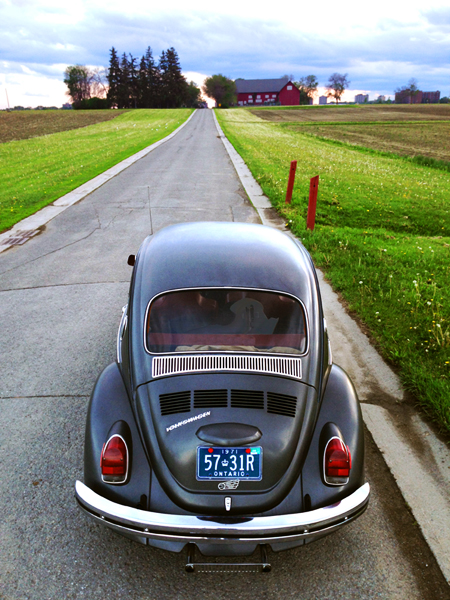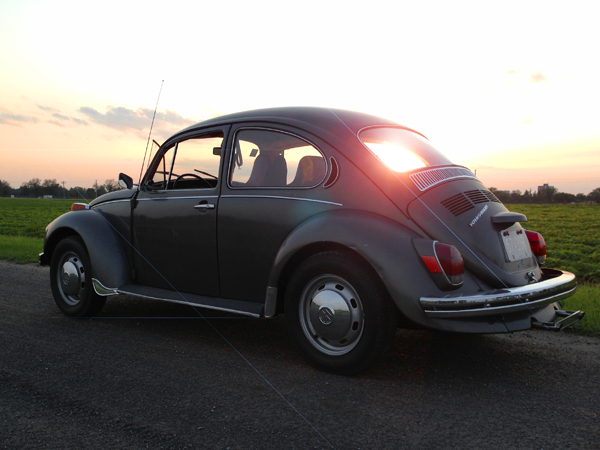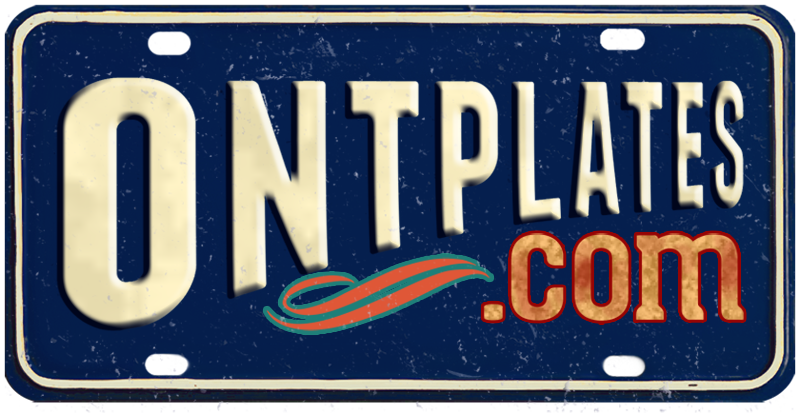 This is the story of my 1971 Volkswagen Super Beetle, and how I registered a pair of YOM plates at the same time as I was buying the car.
This is the story of my 1971 Volkswagen Super Beetle, and how I registered a pair of YOM plates at the same time as I was buying the car.
I’m a car fan, but I’m not an overly mechanical guy. Aside from auto shop class when I was in grade 10, I hadn’t really become familiar with the parts of a car that need the most maintenance, like suspension, brakes, cooling system, or electrical stuff. So if I ever did own a classic car, it would be a steep learning curve, and probably some hiring of mechanics to do stuff for me, at least at first. But I always kept the idea in the back of my mind, just in case the right car came along.
And then, in the summer of 2009, I met Greta.
Greta is a 1971 Volkswagen Super Beetle. Originally sold in Quebec City, never winter driven, painted charcoal gray in 1986, sold to a guy in Aylmer Quebec in 1994, taken care of well, and then put up for sale in ’09. She has been lightly customized with a slight amount of decorative chrome—but no flames on the fenders, no cut-off bumpers, no chopping of any kind.
I have always had a soft spot for Beetles. Truth be told, I had a pair of 1971 plates set aside just in case I ever bought a ’71 Beetle. Why 1971? It’s the last year you can get distinctive blue plates in the Ontario YOM program, and the ’71 model year has some improvements over the previous years that I appreciate, and a ’71 Super Beetle still has a flat front windshield as opposed to the curved one that started in 1973. I like how simple Bugs are mechanically—a good car to learn with, if you can locate parts or have a decent import garage handy to do heavy work. They’re small enough to fit in my garage at home. They’re not priced lucratively. My family had two Beetles at two different times in my life—we had a 1969 when I was born, and we had a 1974 standard Beetle (not a Super) between 1978 and 1982. I remember the sounds and smells of the ’74. All of it came back to me when I took Greta out for a test drive. I fell in love. I thought of nothing else.
My wife (bless her) decided to look the other way while I went through the buying process. As the car was registered in Quebec, I’d have to get it safetied here in Ontario, figure out insurance, get plates, and all that other complicated stuff that you do when buying a used car. So for the benefit of those who are also new, or for the entertainment of those who have been there before, I’ll list the details of how I went about obtaining Greta, and getting my YOM plates registered.
- I bought a bank draft for the purchase amount. I then wrote up a Bill of Sale on my computer. I crossed the from Ontario to Quebec, paid him, and we signed the Bill of Sale. Then, the seller detached the “vehicle portion” of the registration slip, as per the instructions on the back, signed it and gave it to me, as I would need it to register the car in Ontario. I went back home without the car— I couldn’t drive it legally just yet. Because the seller was from Quebec, I didn’t need to buy the Ontario UVIP (used vehicle identification package).

- I phoned my insurance agent and he told me that my policy already gave me immediate coverage to drive a purchased car home, to get it safetied, etc. The coverage was for liability only—I could drive legally, but I had to be careful, as there was no collision insurance in effect (meaning that if I dented Greta on the way home, I pay for the repairs myself). I was told to just quote my regular auto insurance policy number for my other daily car when applying for temporary plates. Check with your agent to see if your policy is as user-friendly.
- I went to my local ServiceOntario office (Ontario’s DMV) to register the car under my name. They filled out a form, looked at my proof of insurance slip for my daily driver, looked at the “vehicle portion” slip that the seller signed over to me, looked at the Bill of Sale, and charged me the Provincial Sales Tax on the vehicle. I also paid the $20 fee (at the time) for a boring set of new Ontario car plates and $15 for a 2-week temporary sticker so I could legally drive the car around to be safetied. I didn’t want next-from-the-box new plates on the car for long, so I went on to the next step right away.
- I made a photocopy of my new registration certificate and put it in the car. I enclosed the original in with my 1971 YOM plates and mailed them with my YOM fee (Expresspost) to the MTO office in Kingston to be inspected and reserved in my name. It’s legal in Ontario to drive with a true copy of your registration slip in the glove box (it says so right on the slip). I wanted to get my YOM application started ASAP, because I wasn’t sure what the turnaround time would be like.
- I found a ride to the seller’s house, and brought along my insurance slip and all the registration materials given to me by the MTO. I put the new next-from-box plates on the car and drove it home.
- I had the car inspected at an import garage that was familiar with the idiosyncrasies of Beetles. They were able to get and install the parts I needed. The one remaining item was the hole in the floor— just one isolated spot—which this garage couldn’t fix for me, as they weren’t a body shop.
- I took it to a local mom-and-pop body shop with a good reputation and had them weld a patch to replace the area around the hole.
- I returned to my import garage, where they looked at the patch and signed my safety certificate.
- While steps 7 through 9 were being done, the MTO approved my YOM plates and returned them to me via courier—they’re reserved in my name, with a letter of ownership, and ready for me to register. It only took five business days!

- I took my YOM plates to the local MTO office, along with my YOM letter of approval, safety certificate, registration, and proof-of-insurance slip (existing policy for my daily driver), and had the car legally plated (the sticker is full-price– no cheap $20 “Historic Parade Vehicle” option– but I already knew that). My boring temp plates had one day left, so I kept them. The MTO clerk had no problem with my keeping them when I was asked (but if you have, say, several months to go before your old plates expire, you have to surrender them in order to be credited for the unused validation time.)
- I had my car appraised by the guy who does appraisals for my insurance company. He came by my house, asked questions, snapped pictures and took notes.
- I went for the occasional spin in Greta around the neighbourhood. Remember, I had liability insurance from my daily driver coverage, which makes it legal, but no collision coverage yet, so I had to drive carefully.
- Once my appraisal report arrived in the mail, I applied for my restricted-use, collector-car insurance and sent the original copy of the appraisal to the insurance company, thereby starting my collision coverage.
So now not only do I sell YOM plates, but I’m my own customer! I can see how the extra steps involved may sound complicated, but when you think of all the other work that goes into bringing an old car back onto the road, the YOM hoops aren’t a big deal, and in running my business, I try to simplify it as much as I can for the customer. Now that I’ve posted my story here, it might be helpful to a first-time YOMer or classic car buyer. Greta and I could often be seen on summer evenings rat-a-tat-a-tatting our way through the government farm in central Ottawa, while listening to baseball on the factory AM radio. She’s since moved on to her next owner, but it was a fun ride, and the plates were the cherry on the sundae.
